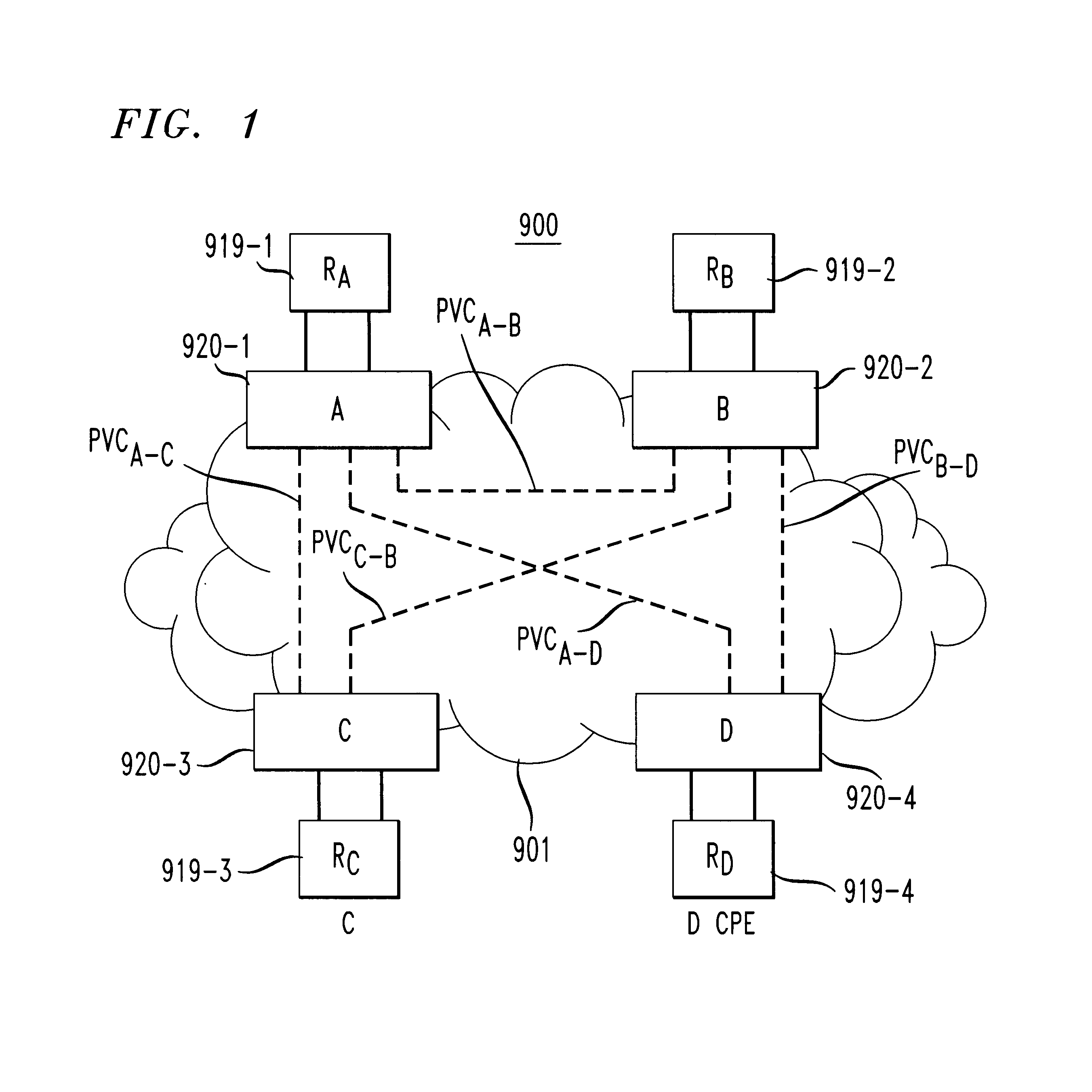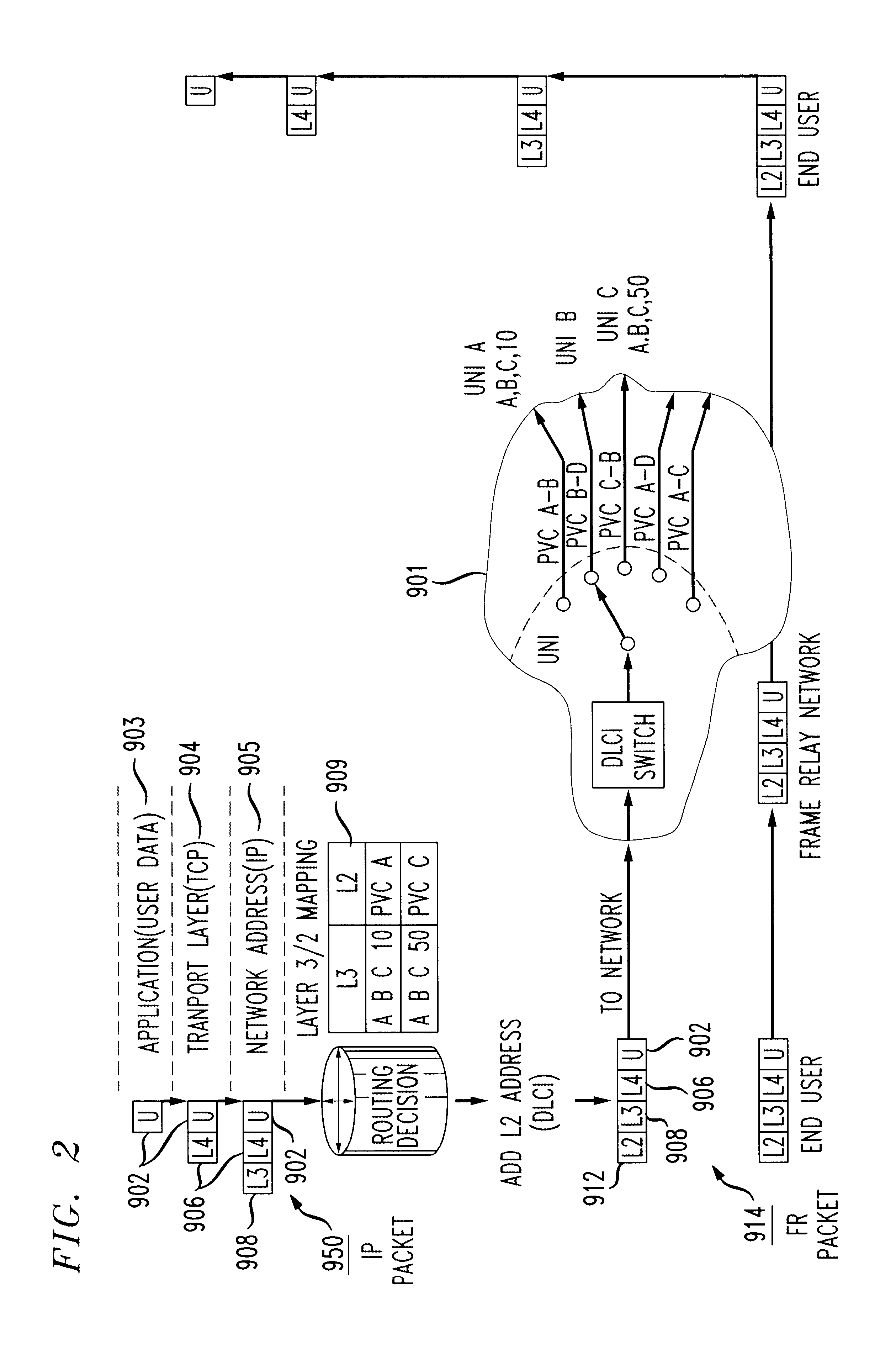Traffic management for frame relay switched data service
a technology of frame relay and data service, which is applied in the field of traffic management of frame relay switched data service, can solve the problems of large-scale highly-meshed networks that are difficult to implement, maintain and manage using conventional network technologies, and create a large burden on both network providers, so as to achieve greater network speed, improve data security, and increase network security
- Summary
- Abstract
- Description
- Claims
- Application Information
AI Technical Summary
Benefits of technology
Problems solved by technology
Method used
Image
Examples
Embodiment Construction
Exemplary embodiments of the present invention allow the large installed base of frame relay customer premises equipment (CPE) to be maintained by using the same interface in a different way to deliver new sets of services and features to the customer. For example, the data link connection identifier (DLCI) known from the frame relay protocol may be used to select among several virtual private networks with differing address spaces, feature sets, and / or conventional permanent virtual circuits (PVCs).
Referring to FIG. 7, a block diagram of a wide area network (WAN) 1 incorporating aspects of the present invention is shown. The WAN 1 includes a plurality of customer premise equipment (CPE) system, for example routers located at each of the end user locations and interconnected via one or more service provider's networks (SPNs) 500. The SPN 500 is typically connected to a plurality of endpoint routers 919 via a plurality of corresponding user network interfaces (UNIs) 402 and / or one or...
PUM
 Login to View More
Login to View More Abstract
Description
Claims
Application Information
 Login to View More
Login to View More - R&D
- Intellectual Property
- Life Sciences
- Materials
- Tech Scout
- Unparalleled Data Quality
- Higher Quality Content
- 60% Fewer Hallucinations
Browse by: Latest US Patents, China's latest patents, Technical Efficacy Thesaurus, Application Domain, Technology Topic, Popular Technical Reports.
© 2025 PatSnap. All rights reserved.Legal|Privacy policy|Modern Slavery Act Transparency Statement|Sitemap|About US| Contact US: help@patsnap.com



